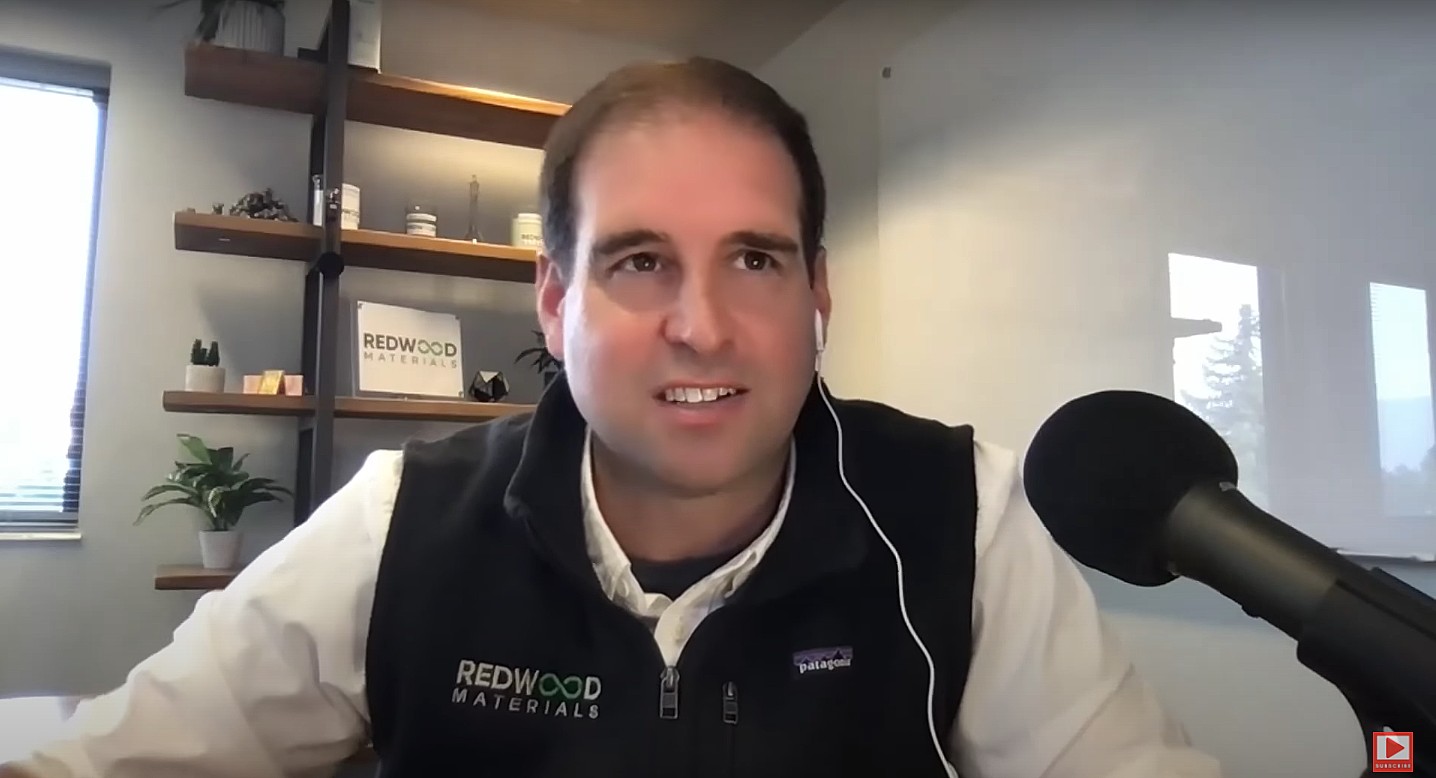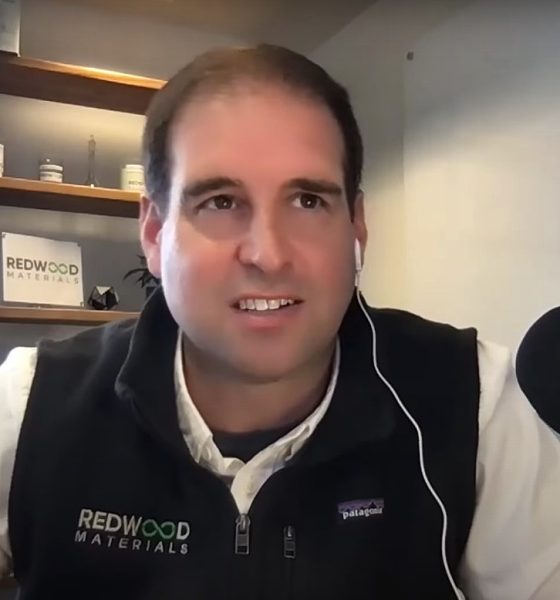

News
Tesla co-founder shares warning about OEM’s EV focus: “They haven’t really done the math fully”
Former Tesla CTO and co-founder JB Straubel recently shared some insights about the electric vehicle revolution and the focus of OEMs on pure electric cars. While conversing with startup investor Jason Calacanis’ in an episode of YouTube’s This Week in Startups, Straubel covered several topics, including Tesla’s early days, the importance of battery recycling, and how some OEMs’ alleged complete dedication to electric vehicles may not be very well thought out at all.
As noted by Straubel, Tesla was actually quite surprised that the Model S did not cause a substantial shift among OEMs to commit fully to battery-electric cars. The Model S was designed to be the best car, period, and for all intents and purposes, it did not disappoint. However, despite the rave reviews of the Model S and the vehicle proving that electric cars could be at the pinnacle of the auto sector, legacy automakers did not make a serious shift to EVs.
“The Model S was such a different car. The Roadster was a technology validation. We proved that batteries could work, they could go on a car, they could be safe, they could do the range and acceleration. The S was a whole different thing. It was so good. We put so much effort into that. Elon was hell-bent on making it the best car on the road. And I think we really delivered on that at the time. It was phenomenal.
“I’m still amazed at the skepticism there was. Even after delivering those, we kinda imagined, I imagined, that people would see this and go ‘Clearly this is the future. This is all gonna work.’ All the car companies are gonna copy this immediately, and we’ll have to go really fast to figure out how we can carve out a niche. And it just didn’t happen. Customers loved it. It was a runaway hit with reviewers and magazines and customers, but the copying and market change didn’t happen,” Straubel said.
The automotive landscape today is different, however. With Tesla now the most valuable automaker by market cap and with Chinese car companies aggressively coming up with modern electric cars, OEMs have now adopted the narrative that they are going all-in on EVs. Straubel, however, noted that these announcements might not necessarily be realistic.
“So many different OEMs, countries, factories, customers are leaping into EVs. You know, making these huge announcements, you know, saying that they’ll be fully electric this decade or the next. They haven’t, I don’t think they’ve done the math fully. What that entails on the supply chain and tracing it all the way back, literally all the way back to the mines. You need to do that, or else, you know, you haven’t really solved it. It has the feeling to me of kind of like a giant overbooked flight.
“All these people like, ‘Oh, this is great. We’re all gonna go to that new place. We all wanna go there. It looks great. Sweet. Let’s all go on the plane and go.’ So everybody’s saying that we all wanna go there at the same time. Meanwhile, we have to sort of build the planes to get there; we have to figure out how to sequence everyone. The figurative runway is like the time to do all this, and it could all get sorted out over time. But obviously, we’re trying to do this fast as a society and as a species,” Straubel said.
Watch Straubel’s full interview with Jason Calacanis’ This Week in Startups in the video below.
Don’t hesitate to contact us with news tips. Just send a message to tips@teslarati.com to give us a heads up.

News
Tesla FSD fleet is nearing 7 billion total miles, including 2.5 billion city miles
As can be seen on Tesla’s official FSD webpage, vehicles equipped with the system have now navigated over 6.99 billion miles.

Tesla’s Full Self-Driving (Supervised) fleet is closing in on almost 7 billion total miles driven, as per data posted by the company on its official FSD webpage.
These figures hint at the massive scale of data fueling Tesla’s rapid FSD improvements, which have been quite notable as of late.
FSD mileage milestones
As can be seen on Tesla’s official FSD webpage, vehicles equipped with the system have now navigated over 6.99 billion miles. Tesla owner and avid FSD tester Whole Mars Catalog also shared a screenshot indicating that from the nearly 7 billion miles traveled by the FSD fleet, more than 2.5 billion miles were driven inside cities.
City miles are particularly valuable for complex urban scenarios like unprotected turns, pedestrian interactions, and traffic lights. This is also the difference-maker for FSD, as only complex solutions, such as Waymo’s self-driving taxis, operate similarly on inner-city streets. And even then, incidents such as the San Francisco blackouts have proven challenging for sensor-rich vehicles like Waymos.
Tesla’s data edge
Tesla has a number of advantages in the autonomous vehicle sector, one of which is the size of its fleet and the number of vehicles training FSD on real-world roads. Tesla’s nearly 7 billion FSD miles then allow the company to roll out updates that make its vehicles behave like they are being driven by experienced drivers, even if they are operating on their own.
So notable are Tesla’s improvements to FSD that NVIDIA Director of Robotics Jim Fan, after experiencing FSD v14, noted that the system is the first AI that passes what he described as a “Physical Turing Test.”
“Despite knowing exactly how robot learning works, I still find it magical watching the steering wheel turn by itself. First it feels surreal, next it becomes routine. Then, like the smartphone, taking it away actively hurts. This is how humanity gets rewired and glued to god-like technologies,” Fan wrote in a post on X.
News
Tesla starts showing how FSD will change lives in Europe
Local officials tested the system on narrow country roads and were impressed by FSD’s smooth, human-like driving, with some calling the service a game-changer for everyday life in areas that are far from urban centers.

Tesla has launched Europe’s first public shuttle service using Full Self-Driving (Supervised) in the rural Eifelkreis Bitburg-Prüm region of Germany, demonstrating how the technology can restore independence and mobility for people who struggle with limited transport options.
Local officials tested the system on narrow country roads and were impressed by FSD’s smooth, human-like driving, with some calling the service a game-changer for everyday life in areas that are far from urban centers.
Officials see real impact on rural residents
Arzfeld Mayor Johannes Kuhl and District Administrator Andreas Kruppert personally tested the Tesla shuttle service. This allowed them to see just how well FSD navigated winding lanes and rural roads confidently. Kruppert said, “Autonomous driving sounds like science fiction to many, but we simply see here that it works totally well in rural regions too.” Kuhl, for his part, also noted that FSD “feels like a very experienced driver.”
The pilot complements the area’s “Citizen Bus” program, which provides on-demand rides for elderly residents who can no longer drive themselves. Tesla Europe shared a video of a demonstration of the service, highlighting how FSD gives people their freedom back, even in places where public transport is not as prevalent.
What the Ministry for Economic Affairs and Transport says
Rhineland-Palatinate’s Minister Daniela Schmitt supported the project, praising the collaboration that made this “first of its kind in Europe” possible. As per the ministry, the rural rollout for the service shows FSD’s potential beyond major cities, and it delivers tangible benefits like grocery runs, doctor visits, and social connections for isolated residents.
“Reliable and flexible mobility is especially vital in rural areas. With the launch of a shuttle service using self-driving vehicles (FSD supervised) by Tesla in the Eifelkreis Bitburg-Prüm, an innovative pilot project is now getting underway that complements local community bus services. It is the first project of its kind in Europe.
“The result is a real gain for rural mobility: greater accessibility, more flexibility and tangible benefits for everyday life. A strong signal for innovation, cooperation and future-oriented mobility beyond urban centers,” the ministry wrote in a LinkedIn post.
News
Tesla China quietly posts Robotaxi-related job listing
Tesla China is currently seeking a Low Voltage Electrical Engineer to work on circuit board design for the company’s autonomous vehicles.

Tesla has posted a new job listing in Shanghai explicitly tied to its Robotaxi program, fueling speculation that the company is preparing to launch its dedicated autonomous ride-hailing service in China.
As noted in the listing, Tesla China is currently seeking a Low Voltage Electrical Engineer to work on circuit board design for the company’s autonomous vehicles.
Robotaxi-specific role
The listing, which was shared on social media platform X by industry watcher @tslaming, suggested that Tesla China is looking to fill the role urgently. The job listing itself specifically mentions that the person hired for the role will be working on the Low Voltage Hardware team, which would design the circuit boards that would serve as the nervous system of the Robotaxi.
Key tasks for the role, as indicated in the job listing, include collaboration with PCB layout, firmware, mechanical, program management, and validation teams, among other responsibilities. The role is based in Shanghai.
China Robotaxi launch
China represents a massive potential market for robotaxis, with its dense urban centers and supportive policies in select cities. Tesla has limited permission to roll out FSD in the country, though despite this, its vehicles have been hailed as among the best in the market when it comes to autonomous features. So far, at least, it appears that China supports Tesla’s FSD and Robotaxi rollout.
This was hinted at in November, when Tesla brought the Cybercab to the 8th China International Import Expo (CIIE) in Shanghai, marking the first time that the autonomous two-seater was brought to the Asia-Pacific region. The vehicle, despite not having a release date in China, received a significant amount of interest among the event’s attendees.








